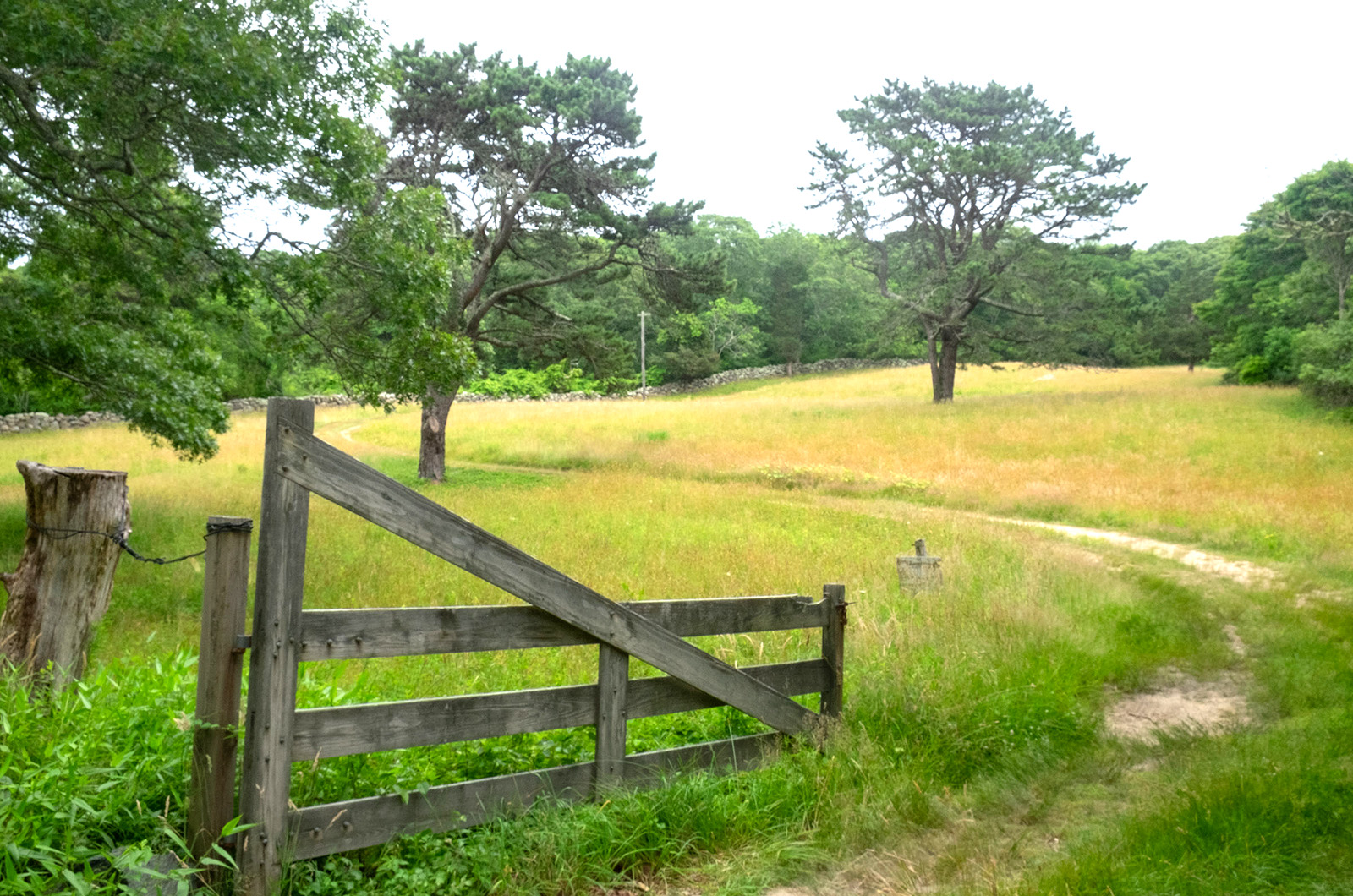When I was a child and summering at East Chop we would occasionally take up-Island excursions to Menemsha or Gay Head (today Aquinnah). En route, there would often be a stopover at Indian Hill. That was principally to please me, for there at the junction of the Christiantown-Indian Hill Road was a tree that to me resembled a horse (or sometimes I decided it was a donkey) that I liked to ride.
I was told that the tree had this shape because Island native inhabitants had tied down the trees to make a trail. There were other bent trees, too, for up-Island farmers had sometimes tied down trees to edge their property. A few of these still stand, though sadly, my tree horse-donkey is gone.
No other bent trees had the panache of that Christiantown junction horse-donkey. When I was six or seven (I am now 93), I would climb on its back and pretend I was trotting through the scrub oaks and the pines and smelling the bayberry underbrush. Then sometimes, I would find my mount had been caparisoned by some wag. There were likely to be ribbons around its neck. I vaguely recall that once, a straw hat had been perched on its head. This gave it the rakish look of a donkey, rather than a horse.
Many years later, as I nervously squeezed the sides of a live donkey as I descended a cliff on the Hawaiian island of Molokai, I longingly dreamed that I was on my wooden Indian Hill horse-donkey instead. In Hawaii, I was descending to see the remains of Molokai’s leper colony.
Sometimes in those long-ago Island years, we would take a picnic lunch up to the top of Indian Hill itself. We would climb the high rock there. In the distance on windy days, we could see the Atlantic’s waves crashing on the water. My father would say that Portugal was just a long sail away on the other side of the ocean. Since my brother took long sails in his 15-foot catboat, that seemed a possible destination. After all, his boat had been sturdily built by Edgartown’s master boat builder of that time, Manuel Swartz Roberts, in what is today’s Old Sculpin Gallery.
Years later, after my husband, Tom Cocroft, and I had moved year-round to the Vineyard, we spent a winter at the end of the Indian Hill Road. We were awaiting having a house built for us on the Lagoon in Vineyard Haven.
While it was being built, Gazette editor and publisher Henry Beetle Hough suggested we stay at a halfway house at Indian Hill. There he and his wife, Betty, had long spent weekends. He had given the house to his great nephew, John Hough, but John was working that winter in Washington.
Soon after we moved in, I was out walking. It was windy, I remember, and I could hear waves booming in the distance, as I had in my childhood. It was fall and wild asters were sprinkled like stars through the fields. The ferns were still a multitude of shades of green in the deep woods. I admired the stone walls bordering fields and wondered whose fields they had once edged I was quite right to have always loved Indian Hill.
At the house itself, there was a garden patch filled with the last of the marigolds, squash vines and tomatoes. The Indian Hill garden was small, no more than a few feet square.
John and Katie Hough live there now and it has vastly changed. There are far different flowers and vegetables growing. The vegetables now are behind the house. Sadly the quail that used to wake us in the mornings with their song are gone. And the Houghs no longer see occasional pheasants perching on their front wall. Toward nightfall in summer, though, they tell me, pinkletinks still sing in the nearby swamp.
Toward the end of that Indian Hill winter I came back from my second visit to Hawaii. The day after I returned, a blizzard of snow covered the road. The snow was so deep it was impossible to drive to the grocery store that stood where up-Island Cronig’s is now.
But the isolation did not matter because Indian Hill, now, as it was then, remains a lovely, unspoiled Island place.





Comments (4)
Comments
Comment policy »